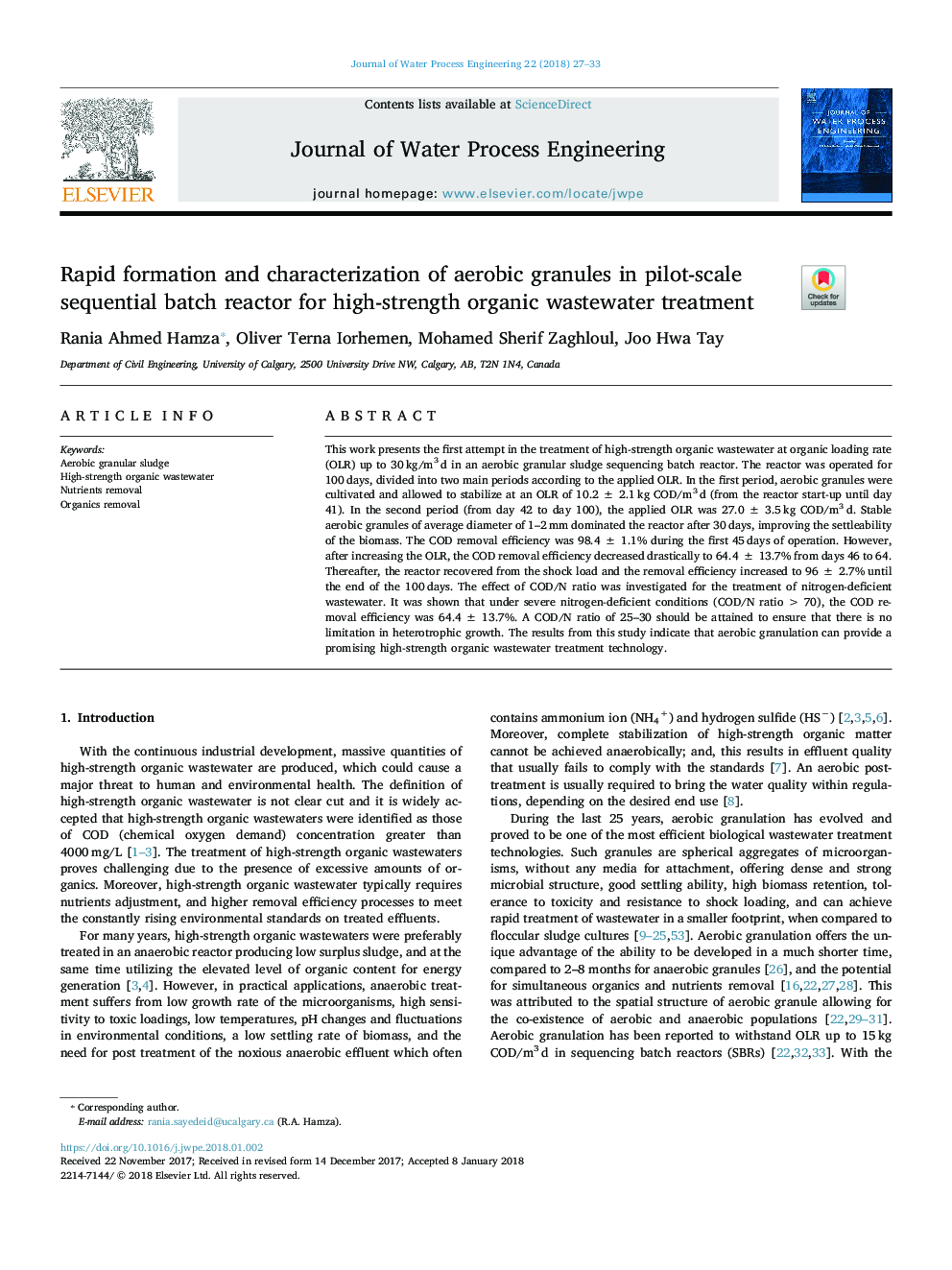| Article ID | Journal | Published Year | Pages | File Type |
|---|---|---|---|---|
| 6671938 | Journal of Water Process Engineering | 2018 | 7 Pages |
Abstract
This work presents the first attempt in the treatment of high-strength organic wastewater at organic loading rate (OLR) up to 30â¯kg/m3â¯d in an aerobic granular sludge sequencing batch reactor. The reactor was operated for 100â¯days, divided into two main periods according to the applied OLR. In the first period, aerobic granules were cultivated and allowed to stabilize at an OLR of 10.2â¯Â±â¯2.1â¯kg COD/m3â¯d (from the reactor start-up until day 41). In the second period (from day 42 to day 100), the applied OLR was 27.0â¯Â±â¯3.5â¯kg COD/m3â¯d. Stable aerobic granules of average diameter of 1-2â¯mm dominated the reactor after 30â¯days, improving the settleability of the biomass. The COD removal efficiency was 98.4â¯Â±â¯1.1% during the first 45â¯days of operation. However, after increasing the OLR, the COD removal efficiency decreased drastically to 64.4â¯Â±â¯13.7% from days 46 to 64. Thereafter, the reactor recovered from the shock load and the removal efficiency increased to 96â¯Â±â¯2.7% until the end of the 100â¯days. The effect of COD/N ratio was investigated for the treatment of nitrogen-deficient wastewater. It was shown that under severe nitrogen-deficient conditions (COD/N ratioâ¯>â¯70), the COD removal efficiency was 64.4â¯Â±â¯13.7%. A COD/N ratio of 25-30 should be attained to ensure that there is no limitation in heterotrophic growth. The results from this study indicate that aerobic granulation can provide a promising high-strength organic wastewater treatment technology.
Related Topics
Physical Sciences and Engineering
Chemical Engineering
Chemical Engineering (General)
Authors
Rania Ahmed Hamza, Oliver Terna Iorhemen, Mohamed Sherif Zaghloul, Joo Hwa Tay,
